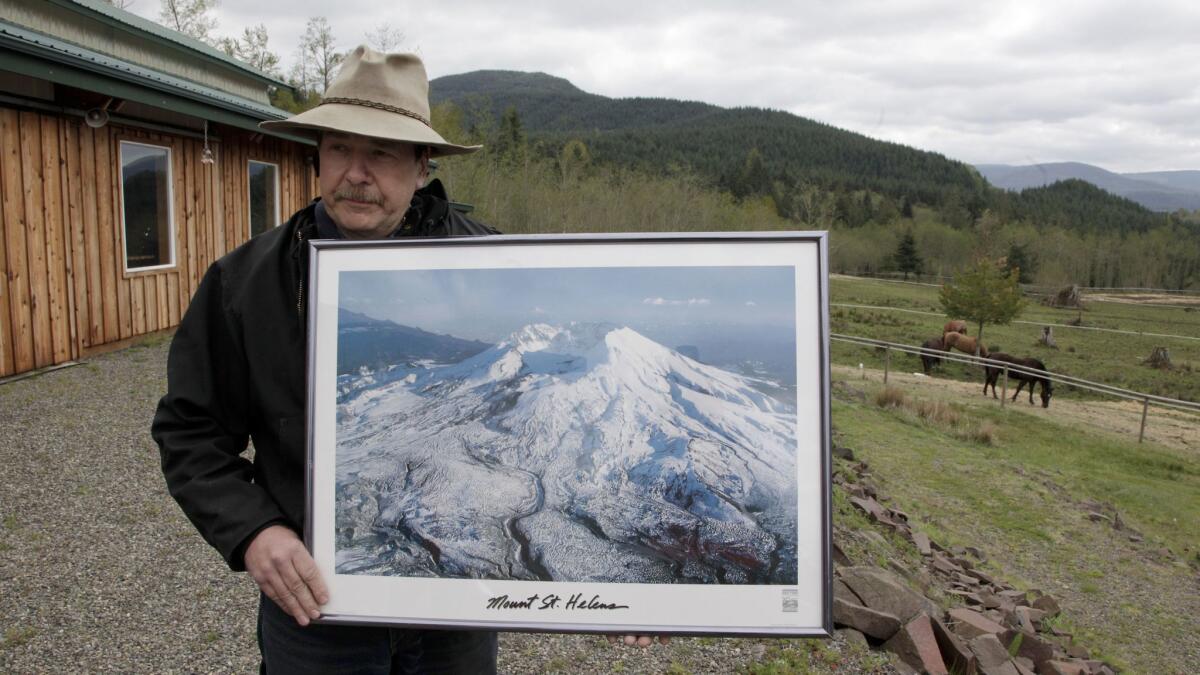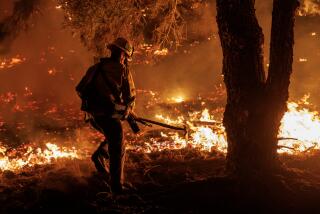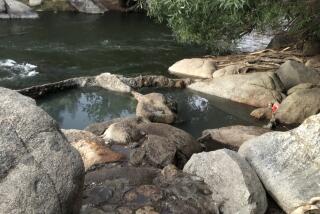Nearly four decades after Mt. St. Helens erupted, a resort in the blast zone faces a different kind of danger

Reporting from TOUTLE, Wash. — When Mt. St. Helens erupted in 1980, killing 57 people, destroying homes, evaporating lakes and rearranging landmarks, Mark Smith and his family were thankful to have survived.
Their lakeside resort did not. The blast blew away the top 1,300 feet of the mountain, burying nearby Spirit Lake Lodge under at least 300 feet of mud and debris.
Smith, who was 20 years old at the time, watched the destruction from afar with his family. “It was exciting,” he told a reporter back then, before realizing that everything was gone.
He returned to the mountain in 1992 to start a tour company and three years later built the Eco Park Resort on 80 acres in the old blast zone.
Now the new resort is under threat too.
The problem is Spirit Lake. Buried in the eruption, it reformed 200 feet higher and much larger than before, and without any natural drainage. The lake could push through the ash, rock and soil around it — especially in the event of a major earthquake — threatening highways and bridges and 50,000 residents below with catastrophic flooding, according to a recent report commissioned by the U.S. Forest Service.
The 250-page study, conducted by the National Academies of Sciences, Engineering, and Medicine, concluded that the chances of a breach were “relatively low” but that the potential consequences were so severe that costly protective measures deserved serious consideration.
Far more likely is chronic flooding along the Toutle and Cowlitz rivers caused by a steady flow of sediment, the study found.
The eruption of Mt. St. Helens is best known for its immediate impacts: thousands of trees obliterated; an ash cloud that darkened the skies of 11 states; and tens of thousands of elk, deer, hares and bears killed.
Tall forest, blue lakes, birds and other wildlife have since returned to the mountain, which now stands 8,363 feet above sea level. In 1982, Congress designated the 110,000-acre Mt. St. Helens National Volcanic Monument for research, education and recreation. More than a million people visit each year to see the blast zone, some of them staying at Eco Park, which Smith runs with his wife.
But the rearrangement of the landscape has caused some long-term problems.
In 1985, the government provided some drainage for Spirit Lake by boring an 11-foot-wide overflow tunnel through 1.6 miles of rock.
A dam more than 180 feet high and 1,800 feet across was built on the north fork of the Toutle River in 1989 to trap sediment washed down from the mountain.
But those attempts to control nature with engineering have their limits.
The tunnel has required millions of dollars in emergency repairs over the last several years to prevent it from collapsing. The sediment dam has been nearing its capacity, allowing more sediment to get through and clog the rivers. The government spends millions of dollars a year dredging the riverbeds to prevent flooding.
The new $570,000 study was conducted at the request of three lawmakers from Washington state — Sens. Patty Murray and Maria Cantwell, both Democrats, and Rep. Jaime Herrera Beutler, a Republican — who wanted “a long-term plan that removes the threat of catastrophic failure of the tunnel and takes the unstable nature of the surface geology into account.”
A team of engineers and scientists spent 18 months studying the situation and identified a range of potential fixes: building a second tunnel, replacing a pumping station, digging a lengthy drainage ditch or carving out a dry spillway to handle emergency overflows. They also called for replacing the aging sediment dam.
But implementing such projects could be difficult.
“No single agency in the region has unilateral authority to make choices and funding decisions about management across the system,” the report states. Furthermore, the researchers found a shortage of up-to-date information on groundwater and sediment flows needed to inform decisions of long-term management.
“The legacy of the 1980 eruption and the prospect of future volcanic, seismic and flood events mean that risk management in the Spirit Lake Toutle River system will be challenging for decades to come,” the report states.
A Forest Service spokesperson says the agency is studying the findings.
Smith, now 57, has witnessed the problems firsthand — and spent much of the last two decades pushing to fix them.
He has gone to the other Washington to lobby members of Congress, seeking funding for new projects and fighting for more public access to the mountain. He has advocated for National Park status, joined the Mt. St. Helens Citizens Advisory Committee — which was set up by Congress — and made an unsuccessful run for county commissioner.
“It’s the right thing to do,” Smith said. “Growing up in this area, spending time in the backcountry of Mt. St. Helens helps me understand the benefit of public access to nature. I want my grandchildren and future generations to have the same opportunities that I had.”
At some point, Mt. St. Helens will erupt again — a spasm of seismic activity has been reported in the vicinity since New Year’s Day — but scientists say that does not appear imminent. For now, the mountain sends puffs of steam into the sky as it cooks new lava in its two magma chambers.
Anderson is a special correspondent
More to Read
Sign up for Essential California
The most important California stories and recommendations in your inbox every morning.
You may occasionally receive promotional content from the Los Angeles Times.










